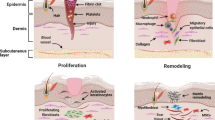Abstract.
Objective and design: To evaluate the beneficial effects of exogenous NO and its levels of action in a model of SIRS/Bacterial Translocation (BT) induced by two sequential insults.
Material or subjects: Eighty-six Wistar rats were submitted to different treatments and their tissue and blood samples were accessed at the end of the experiment.
Treatment: Nitric Oxide was compared to Gentamicin as the tested guideline for our study.
Methods: Dacron graft implantation (first insult) and subsequent administration of Zymosan A® (second insult) were performed in Wistar rats. The animals were divided into 6 groups: I) No manipulation (BASAL); II) Laparotomy (L) + mineral oil (SHAM); III) L + Graft-Zymosan (GZ) (CONTROL); IV) L + GZ + Antibiotic (A) (ASSAY I); V) L + GZ + NO (ASSAY II) and VI) L + GZ + A + NO (ASSAY III). Determinations: Survival, Bacterial Translocation, myeloperoxidase (MPO), Cytokines (TNF-α, IL-1β, IFN-γ), Oxygen Free Radical (OFR) SOA and detoxifying enzymes (SOD, Superoxide Dismutase, CAT, Catalase and GPX, Glutathione Peroxidase), Cell Adhesion Molecules, CAMs (ICAM-1, VCAM-1 and PECAM-1) and Nuclear Transcription Factor, NFκB.
Results: The model established induced a mortality rate of 20% and generated BT in all samples. It also significantly increased all variables, with P < 0.001 for MPO and all Cytokines; P < 0.01 for all OFR, and P < 0.05 for CAMs and for NFκB. Treatment with A reduced mortality to 0%, significantly decreased BT, MPO, Cytokines and OFR (P < 0.05), but did not reduce CAMs or NFκB. NO, either alone or associated, reduced mortality to 0% and abolished BT, significantly decreasing nearly all the variables studied (P < 0.001 for MPO and all Cytokines; P < 0.01 for OFR, and P < 0.05 for CAMs and for NFκB).
Conclusions: The exogenous administration of NO before the two sequential insults prevented BT and controlled SIRS peripherally and at both cellular and transcriptional level in a lasting manner. In contrast, antibiotic treatment only exerted its action at peripheral level. The association of both treatments did not provide any important advantages.
Similar content being viewed by others
Author information
Authors and Affiliations
Corresponding author
Additional information
Received 2 November 2004; returned for revision 25 November 2004; accepted by K. Visvanathan 25 February 2005
Rights and permissions
About this article
Cite this article
Lozano, F.S., Barros, M.B., Fresnadillo, M.J. et al. Nitric oxide prevents the bacterial translocation and inhibits the systemic inflammatory response produced by implantation of a vascular prosthesis followed by Zymosan A. Inflamm. res. 54, 261–270 (2005). https://doi.org/10.1007/s00011-005-1353-x
Issue Date:
DOI: https://doi.org/10.1007/s00011-005-1353-x




